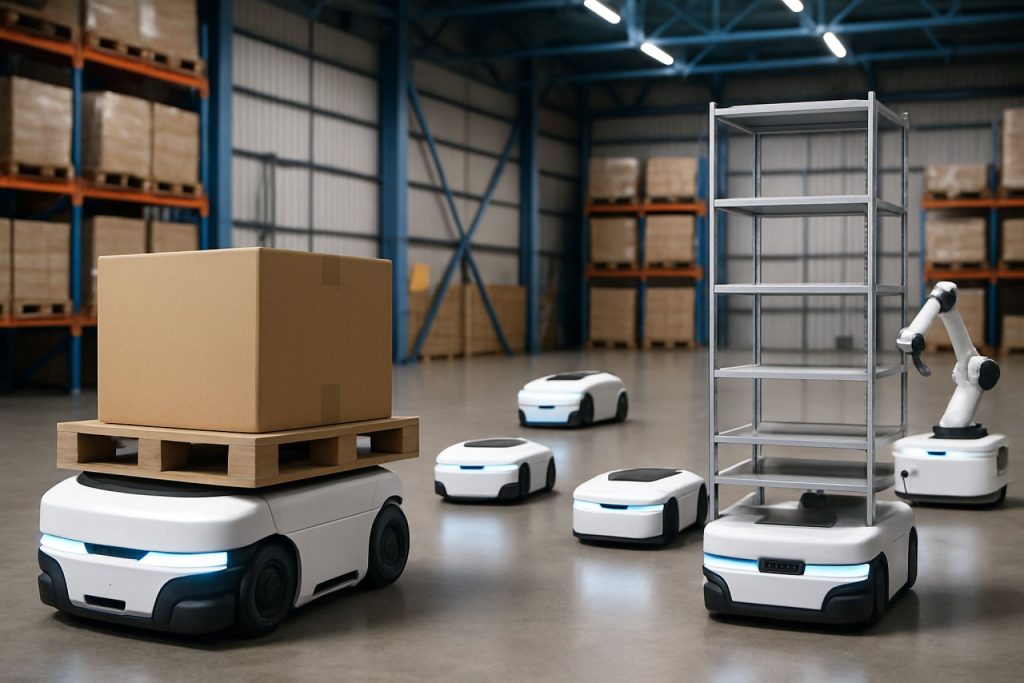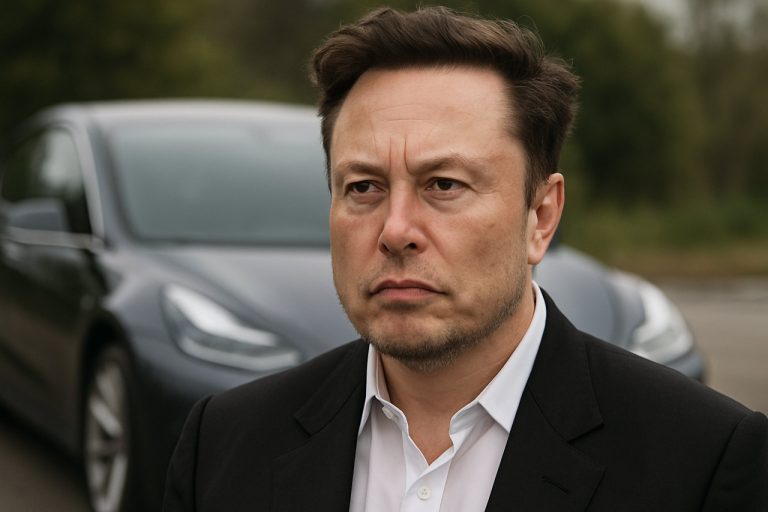
Autonomous Robot Fleet Orchestration Market Report 2025: Unveiling Growth Drivers, Technology Innovations, and Strategic Opportunities for the Next 5 Years
- Executive Summary & Market Overview
- Key Technology Trends in Autonomous Robot Fleet Orchestration
- Competitive Landscape and Leading Players
- Market Growth Forecasts and Revenue Projections (2025–2030)
- Regional Analysis: Adoption and Investment Hotspots
- Future Outlook: Emerging Applications and Strategic Roadmaps
- Challenges, Risks, and Opportunities for Stakeholders
- Sources & References
Executive Summary & Market Overview
Autonomous robot fleet orchestration refers to the integrated management, coordination, and optimization of multiple autonomous robots—such as mobile robots, drones, and automated guided vehicles (AGVs)—within a shared operational environment. This orchestration leverages advanced software platforms, artificial intelligence, and real-time data analytics to ensure seamless collaboration, task allocation, and resource optimization across diverse robotic assets. The market for autonomous robot fleet orchestration is rapidly evolving, driven by the accelerating adoption of automation in sectors such as logistics, manufacturing, healthcare, and smart cities.
In 2025, the global market for autonomous robot fleet orchestration is projected to experience robust growth, underpinned by the increasing complexity of multi-robot deployments and the need for scalable, interoperable solutions. According to International Data Corporation (IDC), spending on robotics and related services is expected to surpass $240 billion by 2025, with orchestration platforms playing a pivotal role in maximizing return on investment for enterprises. The proliferation of e-commerce, labor shortages, and the demand for 24/7 operations are compelling organizations to deploy larger and more diverse fleets, necessitating sophisticated orchestration capabilities.
- Logistics and Warehousing: The logistics sector remains a primary adopter, with companies like Amazon and DHL leveraging orchestration platforms to manage thousands of robots for picking, sorting, and last-mile delivery.
- Manufacturing: Smart factories are integrating orchestration solutions to synchronize AGVs, robotic arms, and inspection drones, enhancing throughput and reducing downtime, as highlighted by Siemens and ABB.
- Healthcare: Hospitals are deploying coordinated fleets for material transport, disinfection, and patient assistance, with orchestration platforms ensuring safety and efficiency, as seen in deployments by Omicron Robotics.
Key trends shaping the 2025 market include the rise of cloud-based orchestration, interoperability standards (such as VDA 5050), and the integration of AI-driven decision-making for dynamic task allocation. Leading vendors, including Fetch Robotics and Locus Robotics, are expanding their orchestration capabilities to support heterogeneous fleets and cross-vendor compatibility. As organizations seek to scale automation initiatives, the demand for robust, secure, and flexible orchestration platforms is expected to intensify, positioning autonomous robot fleet orchestration as a cornerstone of next-generation operational excellence.
Key Technology Trends in Autonomous Robot Fleet Orchestration
Autonomous robot fleet orchestration is rapidly evolving, driven by the need for scalable, efficient, and intelligent management of heterogeneous robotic systems across industries such as logistics, manufacturing, and healthcare. In 2025, several key technology trends are shaping the orchestration landscape, enabling organizations to deploy, coordinate, and optimize fleets of autonomous robots with unprecedented sophistication.
- AI-Driven Decision Making: Advanced artificial intelligence and machine learning algorithms are increasingly central to fleet orchestration. These technologies enable real-time decision-making, adaptive task allocation, and predictive maintenance, allowing fleets to dynamically respond to changing operational conditions and optimize resource utilization. For example, AI-powered orchestration platforms can autonomously reroute robots in response to traffic bottlenecks or equipment failures, minimizing downtime and maximizing throughput (Boston Consulting Group).
- Interoperability and Open Standards: The push for interoperability is leading to the adoption of open communication protocols and standardized APIs, such as the Robot Operating System (ROS) and the Open Robotics Middleware Framework (Open-RMF). These standards facilitate seamless integration of diverse robot types and brands within a single orchestration platform, reducing vendor lock-in and enabling more flexible, scalable deployments (Open Robotics).
- Edge Computing and Distributed Intelligence: Edge computing is becoming essential for low-latency decision-making and data processing close to the robots themselves. By distributing intelligence across the fleet, orchestration systems can ensure faster response times, improved reliability, and reduced dependence on centralized cloud infrastructure (Gartner).
- Cloud-Native Orchestration Platforms: Cloud-native architectures are enabling scalable, resilient, and easily upgradable orchestration solutions. These platforms support remote monitoring, over-the-air updates, and integration with enterprise IT systems, making it easier for organizations to manage large, geographically distributed fleets (IDC).
- Cybersecurity and Data Privacy: As fleets become more connected, robust cybersecurity measures are critical. Orchestration platforms are incorporating advanced encryption, authentication, and anomaly detection to safeguard against cyber threats and ensure compliance with data privacy regulations (European Union Agency for Cybersecurity (ENISA)).
These trends are collectively enabling more autonomous, resilient, and efficient robot fleet operations, positioning orchestration as a cornerstone of next-generation automation strategies in 2025 and beyond.
Competitive Landscape and Leading Players
The competitive landscape for autonomous robot fleet orchestration in 2025 is characterized by rapid innovation, strategic partnerships, and a growing number of specialized solution providers. As industries such as logistics, manufacturing, healthcare, and retail increasingly deploy fleets of autonomous mobile robots (AMRs) and automated guided vehicles (AGVs), the need for sophisticated orchestration platforms has intensified. These platforms enable seamless coordination, task allocation, and real-time optimization across heterogeneous robot fleets, often from multiple vendors.
Leading players in this market include both established robotics companies and emerging software-focused startups. Fetch Robotics (now part of Zebra Technologies) continues to expand its orchestration capabilities, leveraging its cloud-based platform to manage mixed fleets and integrate with warehouse management systems. SVT Robotics has gained traction with its SOFTBOT Platform, which simplifies the integration and orchestration of diverse automation technologies, reducing deployment times and operational complexity.
Locus Robotics remains a dominant force, particularly in e-commerce fulfillment, offering advanced fleet management tools that optimize robot collaboration and human-robot interaction. Meanwhile, GreyOrange provides an AI-driven orchestration suite that dynamically assigns tasks and routes to robots based on real-time demand and resource availability.
Global technology giants are also entering the space. Google Cloud and Microsoft Azure are developing cloud-based orchestration frameworks, leveraging their expertise in AI, IoT, and edge computing to offer scalable, vendor-agnostic solutions. These platforms appeal to enterprises seeking to unify operations across multiple sites and robot types.
Strategic partnerships and open-source initiatives are shaping the competitive dynamics. The Open Robotics community, through projects like ROS 2, is fostering interoperability standards that lower barriers for new entrants and encourage ecosystem collaboration. Additionally, companies such as Boston Dynamics and ABB are integrating orchestration capabilities into their broader automation portfolios, targeting sectors like manufacturing and logistics.
According to IDC, the global market for robot orchestration software is projected to grow at a CAGR of over 20% through 2025, driven by the need for operational efficiency, scalability, and flexibility. As the market matures, differentiation will increasingly hinge on interoperability, ease of integration, and the ability to deliver actionable insights from fleet data.
Market Growth Forecasts and Revenue Projections (2025–2030)
The market for autonomous robot fleet orchestration is poised for robust growth in 2025, driven by accelerating adoption across logistics, manufacturing, healthcare, and smart city applications. According to Gartner, global robotics and drone revenues are projected to surpass $200 billion in 2025, with orchestration platforms representing a critical enabling layer for multi-robot deployments. The orchestration segment, which includes software and cloud-based platforms for managing heterogeneous fleets, is expected to outpace the growth of standalone robot hardware due to the increasing complexity and scale of deployments.
Market research by International Data Corporation (IDC) forecasts that spending on robotics orchestration software will grow at a compound annual growth rate (CAGR) of over 25% from 2025 through 2030, as enterprises seek to optimize workflows, reduce downtime, and enable real-time decision-making across distributed fleets. The logistics sector, in particular, is anticipated to account for the largest share of revenue, with e-commerce fulfillment centers and last-mile delivery networks investing heavily in orchestration solutions to manage thousands of autonomous mobile robots (AMRs) and drones simultaneously.
By 2025, the global market size for autonomous robot fleet orchestration platforms is estimated to reach $3.2 billion, according to MarketsandMarkets. This figure is expected to climb to $8.7 billion by 2030, reflecting the rapid scaling of multi-robot operations and the integration of artificial intelligence for dynamic task allocation and predictive maintenance. Key growth drivers include the proliferation of 5G connectivity, advances in edge computing, and the need for interoperability across diverse robot types and brands.
- North America is projected to maintain its lead in market share through 2025, fueled by early adoption in warehousing and healthcare.
- Asia-Pacific is expected to exhibit the fastest growth rate, driven by large-scale manufacturing automation in China, Japan, and South Korea.
- Strategic partnerships between robotics OEMs and software vendors are anticipated to accelerate innovation and market penetration.
Overall, 2025 marks a pivotal year for autonomous robot fleet orchestration, setting the stage for exponential revenue growth and technological advancement through the end of the decade.
Regional Analysis: Adoption and Investment Hotspots
The global landscape for autonomous robot fleet orchestration in 2025 is marked by distinct regional adoption patterns and investment hotspots, driven by varying levels of industrial automation, labor costs, and digital infrastructure. North America and East Asia, particularly the United States, China, Japan, and South Korea, are at the forefront of both deployment and capital inflow.
In North America, the United States leads with robust investments in logistics, e-commerce fulfillment, and manufacturing automation. Major players such as Amazon and Walmart have scaled up their autonomous robot fleets, leveraging orchestration platforms to optimize warehouse operations and last-mile delivery. The region benefits from a mature venture capital ecosystem, with funding rounds for orchestration software providers like Locus Robotics and Fetch Robotics exceeding $100 million in recent years, according to CB Insights.
East Asia, led by China, is experiencing rapid adoption, fueled by government-backed initiatives and a dense manufacturing base. Chinese e-commerce giants such as Alibaba and JD.com have deployed large-scale autonomous fleets, with orchestration platforms enabling real-time coordination across thousands of robots. The Chinese government’s “Made in China 2025” policy continues to incentivize automation, resulting in a projected 20% CAGR for the region’s robot orchestration market through 2025, as reported by IDC.
- Europe: Germany, the Netherlands, and the UK are leading European adoption, particularly in automotive and logistics sectors. The European Union’s focus on Industry 4.0 and digital supply chains is accelerating investment, with companies like Siemens and DHL piloting orchestration solutions in smart factories and distribution centers.
- Middle East: The UAE and Saudi Arabia are emerging as investment hotspots, leveraging autonomous robot fleets in logistics hubs and smart city projects, supported by government-backed innovation funds, according to Gartner.
- Rest of World: Adoption in Latin America and Africa remains nascent, constrained by infrastructure and capital, but pilot projects in Brazil and South Africa signal growing interest.
Overall, 2025 sees a concentration of autonomous robot fleet orchestration investments in regions with advanced digital infrastructure, strong industrial bases, and proactive policy support, setting the stage for further global expansion.
Future Outlook: Emerging Applications and Strategic Roadmaps
The future outlook for autonomous robot fleet orchestration in 2025 is shaped by rapid advancements in artificial intelligence, edge computing, and 5G connectivity, which are enabling more sophisticated, scalable, and reliable multi-robot coordination across industries. As organizations seek to maximize operational efficiency and flexibility, the orchestration of heterogeneous robot fleets—comprising mobile robots, drones, and fixed automation—will become a strategic imperative.
Emerging applications are expanding beyond traditional manufacturing and warehousing. In logistics, autonomous fleets are being deployed for last-mile delivery, yard management, and cross-docking operations, with companies like DHL and Amazon piloting large-scale, multi-robot systems to optimize throughput and reduce labor costs. In healthcare, hospitals are orchestrating fleets of service robots for medication delivery, disinfection, and patient assistance, as seen in deployments by Savioke and AIMed Robotics. Agriculture is also witnessing the rise of coordinated swarms for planting, monitoring, and harvesting, with startups like EarthSense leading innovation.
Strategic roadmaps for 2025 emphasize interoperability, real-time data sharing, and cloud-to-edge orchestration. Industry consortia such as the Open Robotics and the Robotic Industries Association are driving standardization efforts, enabling seamless integration of robots from different vendors. Leading technology providers, including Microsoft and Google Cloud, are investing in orchestration platforms that leverage AI-driven scheduling, dynamic task allocation, and predictive maintenance.
- AI-powered orchestration: Advanced algorithms will enable real-time decision-making, adaptive routing, and collaborative task execution, reducing downtime and increasing fleet productivity.
- Edge-cloud synergy: Hybrid architectures will allow latency-sensitive operations to run at the edge, while cloud platforms handle large-scale analytics and fleet-wide optimization.
- Cybersecurity and compliance: As fleets scale, robust security frameworks and regulatory compliance (e.g., GDPR, ISO 10218) will be critical to protect data and ensure safe human-robot interaction.
According to IDC, the global market for autonomous robot orchestration platforms is projected to grow at a CAGR of over 20% through 2025, driven by demand for flexible automation and the proliferation of Industry 4.0 initiatives. Strategic investments in orchestration technologies will be pivotal for organizations aiming to achieve resilient, adaptive, and scalable automation ecosystems in the coming years.
Challenges, Risks, and Opportunities for Stakeholders
The orchestration of autonomous robot fleets in 2025 presents a complex landscape of challenges, risks, and opportunities for stakeholders across industries such as logistics, manufacturing, healthcare, and urban mobility. As organizations scale up deployments, the need for robust, interoperable, and secure orchestration platforms becomes paramount.
Challenges and Risks:
- Interoperability and Integration: Many organizations operate heterogeneous fleets comprising robots from different vendors, each with proprietary software and communication protocols. Achieving seamless integration and real-time coordination remains a significant technical hurdle, often requiring custom middleware or adherence to emerging standards such as the Open Robotics ROS ecosystem.
- Cybersecurity Threats: As fleets become more connected, the risk of cyberattacks increases. Vulnerabilities in orchestration platforms can lead to unauthorized access, data breaches, or even malicious control of robots, posing safety and operational risks. According to Gartner, cybersecurity is a top concern for 68% of organizations deploying autonomous systems in 2025.
- Scalability and Reliability: Orchestrating hundreds or thousands of robots in dynamic environments requires highly scalable cloud or edge-based solutions. Downtime or latency in orchestration can disrupt operations, leading to financial losses and reputational damage. IDC notes that 40% of early adopters cite scalability as a primary barrier to wider fleet deployment.
- Regulatory and Ethical Considerations: Evolving regulations around data privacy, safety, and liability create uncertainty for stakeholders. Compliance with local and international standards is essential, especially in sectors like healthcare and public transportation.
Opportunities:
- Operational Efficiency: Advanced orchestration enables real-time optimization of fleet routes, task allocation, and energy management, reducing costs and improving service levels. McKinsey & Company estimates that effective fleet orchestration can boost productivity by up to 30% in logistics operations.
- Data-Driven Insights: Orchestration platforms generate valuable operational data, enabling predictive maintenance, process optimization, and informed decision-making for stakeholders.
- New Business Models: The rise of “Robotics-as-a-Service” (RaaS) and shared fleet models creates opportunities for technology providers, integrators, and end-users to access advanced robotics without large upfront investments, as highlighted by ABI Research.
In summary, while autonomous robot fleet orchestration in 2025 is fraught with technical, security, and regulatory challenges, it also offers significant opportunities for efficiency gains, innovation, and new revenue streams for forward-thinking stakeholders.
Sources & References
- International Data Corporation (IDC)
- Amazon
- Siemens
- ABB
- European Union Agency for Cybersecurity (ENISA)
- GreyOrange
- Google Cloud
- MarketsandMarkets
- Walmart
- Alibaba
- JD.com
- Microsoft
- McKinsey & Company
- ABI Research



